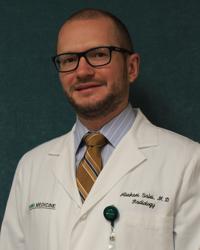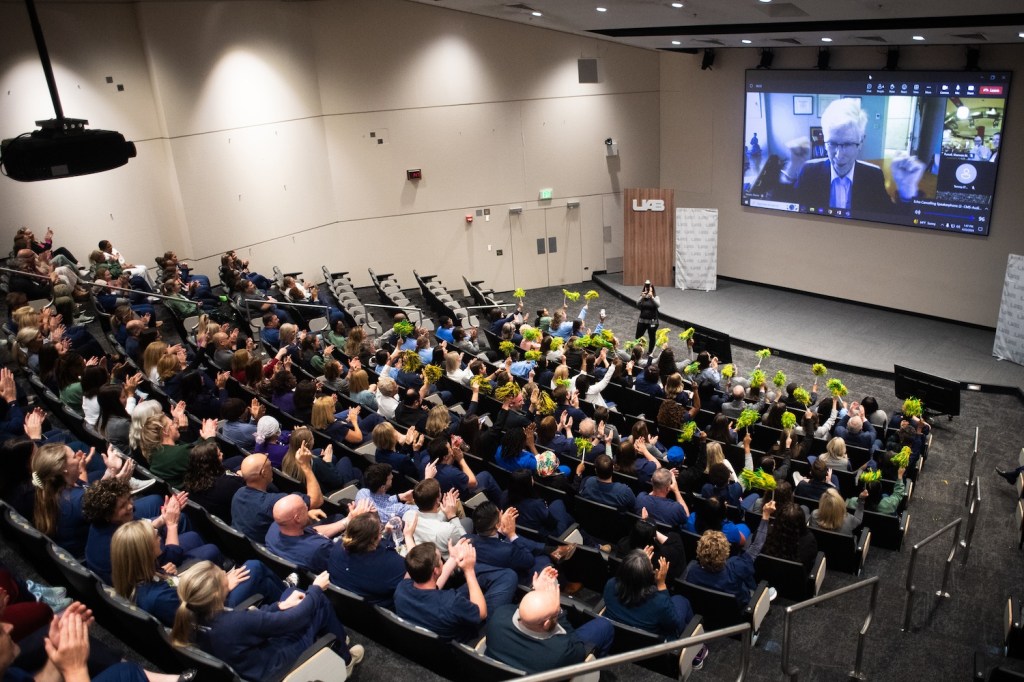Interventional radiology (IR) is an important part of modern patient care. IR doctors are specialists who perform minimally invasive procedures to help diagnose and treat a wide range of medical conditions. These minimally invasive procedures are performed through tiny nicks in the skin, which often are no larger than a pinhole. Through these tiny nicks, IR doctors use imaging technology to help guide them in using advanced tools within the patient’s body. These imaging technologies include x-rays, ultrasound, and computed tomography (CT).
Compared to traditional “open” surgery, IR procedures have less risk, cause less pain, and have a shorter recovery time. In fact, most of these procedures allow the patient to go home the same day. An additional benefit of this minimally invasive approach is that most patients can comfortably have these procedures with sedation, which avoids the risks associated with general anesthesia. IR doctors receive at least six years of additional training after medical school in order to utilize the latest techniques and technology in tailoring a specific treatment plan for each patient.
The UAB Medicine Interventional Radiology team includes nationally and internationally recognized IR physicians, along with physician assistants, who strive to make excellence in patient care their highest priority. The IR physicians at UAB are actively involved in research to promote and advance patient care. As such, patients may be invited to participate in clinical trials, providing access to potentially life-saving techniques and treatments not yet available at other medical centers. Furthermore, the IR Clinic at The Kirklin Clinic of UAB Hospital is the area’s only outpatient IR clinic. This dedicated space gives patients an opportunity to sit with one of UAB Medicine’s IR experts to discuss their treatment options, undergo a thorough pre-procedure evaluation, and receive dedicated post-procedure follow-up care.
Each of the IR physicians at UAB Medicine is highly skilled, fellowship-trained, and board-certified by the American Board of Radiology. They are proud to offer patients a variety of minimally invasive treatment options for conditions such as:
- Liver cancer & cancers that have spread to the liver
- Kidney cancers & non-cancerous kidney masses
- Lung cancer & cancers that have spread to the lung or bones
- Uterine fibroids
- Deep venous thrombosis (DVT)
- Pulmonary embolism
Other Conditions & Treatments:
- Inferior vena cava (IVC) filter placement and removal
- Painful spinal compression fractures
- Chronic joint pain
- Pain
- Portal hypertension
- Vascular malformations
- Pulmonary arterio-venous malformation
- Varicoceles
- Pelvic congestion syndrome
- Chronic pelvic pain in females
- Biliary obstruction
- Urinary obstruction
- Abscess drainage
- Feeding tubes
- Vascular access for hemodialysis or long-term infusions
- Vascular access for chemotherapy
- Kyphoplasty and vertebroplasty
- Nephrostomy
- Peritoneal catheter placement
- Renal transplant biopsy
The most complex IR procedures take place in one of our dedicated angiography suites in UAB Hospital, all of which feature the latest and most advanced imaging technology. Some procedures, including central venous catheters, can be performed at The Kirklin Clinic of UAB Hospital.
Speak to your physician about a referral to the UAB Interventional Radiology Clinic, or to schedule an appointment without a physician referral, please call UAB HealthFinder at 1-800-934-9999.
Care Providers
Videos

Resources
- Interventional Radiology – Other Conditions and Procedures
- UAB Department of Radiology
- The Interventional Initiative
- Society of Interventional Radiology
- The Radiology Information Resource for Patients
Related Specialties
- Bone Cancer
- Kidney Cancer
- Liver Cancer
- Prostate Artery Embolization
- Uterine Fibroid Embolization
- Uterine Fibroids
Clinical Trials
Speak to your physician about your options and browse the link below for more information
Latest News
View All News-
Finding a home away from home: Pakistani American’s trailblazing journey of immigration, US citizenship, service and excellence is a legacy to behold
April 19, 2024
-
Canon named president of University of Alabama Health Services Foundation and chief physician executive of the UAB Health System
December 20, 2023
-
Killing cancer with code: UAB radiation oncology team wins international competition
November 30, 2023
-
Morgan appointed to American Board of Radiology Board of Governors
November 17, 2023
-
UAB launches WISDOM study and seeks participants in breast cancer screening study
October 13, 2023









